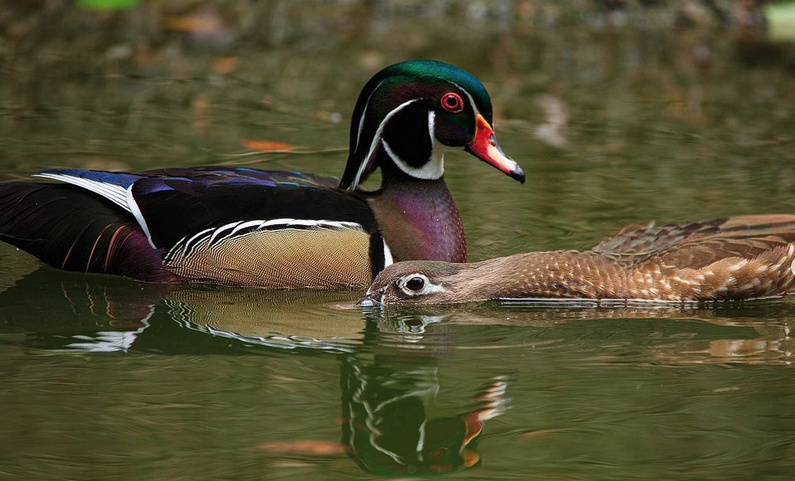By Sally Siko
Tag Archives: wood duck
Wood Duck breeding season in North Carolina
By Sally Siko
As is the case with this pair of Wood Ducks, there’s a lot of action going on in the Carolinas.
Although many Wood Ducks have already hatched one clutch this spring, soon they’ll be raising a second as the year continues.
In fact, they are the only species of duck in North America to lay eggs twice in a breeding season.



Wood Ducks are cavity nesters often using the empty holes chipped away by woodpeckers in dead trees and in nest boxes placed near bodies of water.
After lining the cavity with soft grass and feathers, the hen will lay a clutch of 10-15 eggs. Brooding time averages about 30 days.
As seen in the last few photos in this post, the ducklings will leave the safety of their nest soon after hatching.
It’s a remarkable thing to watch these tiny ducks take that first giant leap down into the watery world below!
The young ducks will then spend a few months with their mother learning how to feed themselves.


Though the species occurs throughout the entire year here in NC, they are more numerously found during the spring and summer months.
Look for these gorgeous birds in wooded or semi-wooded fresh water ponds, lakes, and larger streams.
Their wintering habitat is similar: wooded or semi-wooded ponds, impoundments, swamps, and larger streams.
Aren’t they lovely?



Photos by @sally_siko of @bestlife_birding on my beloved full frame 50MP beast, the mighty @canonusa #5Ds
